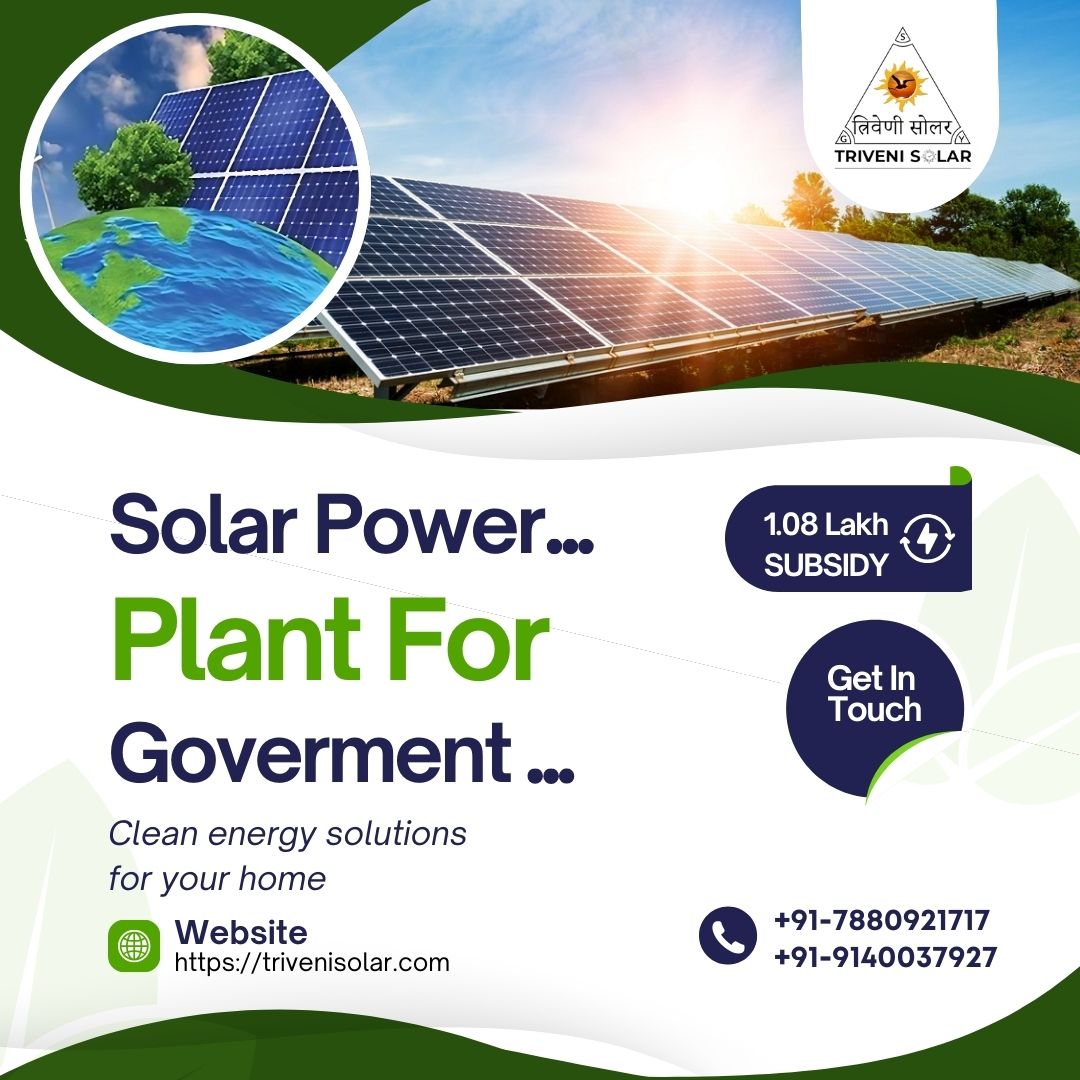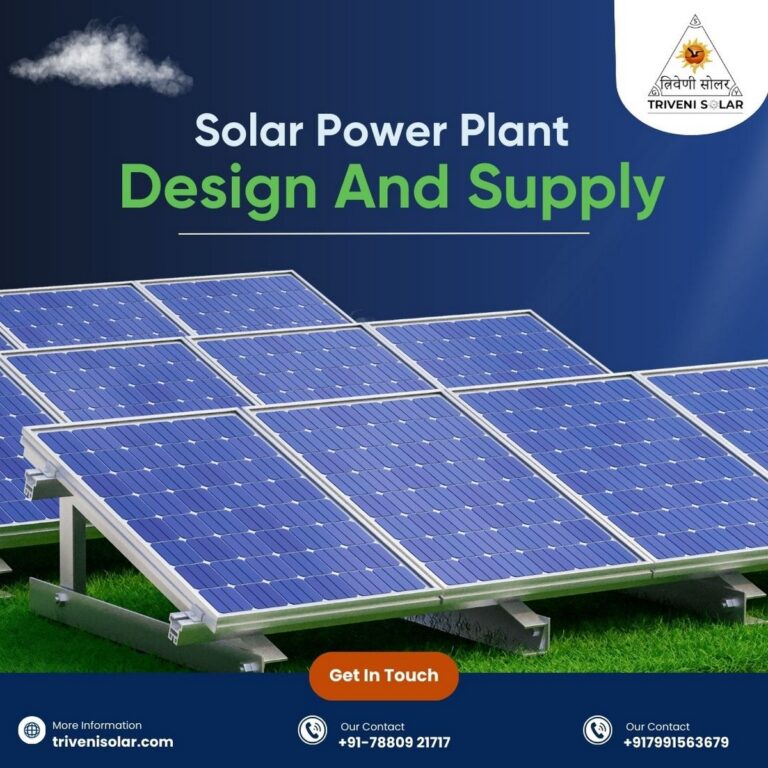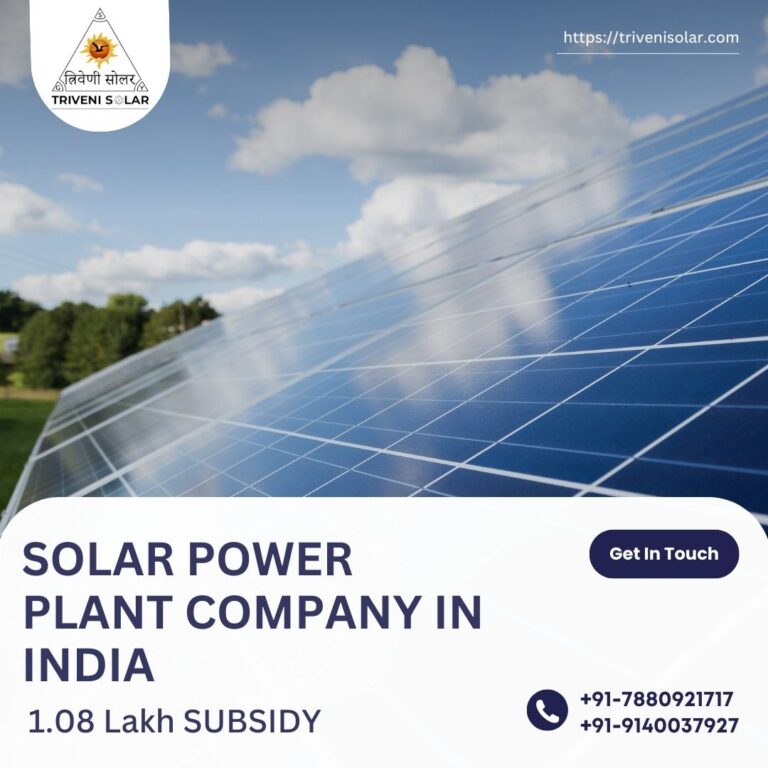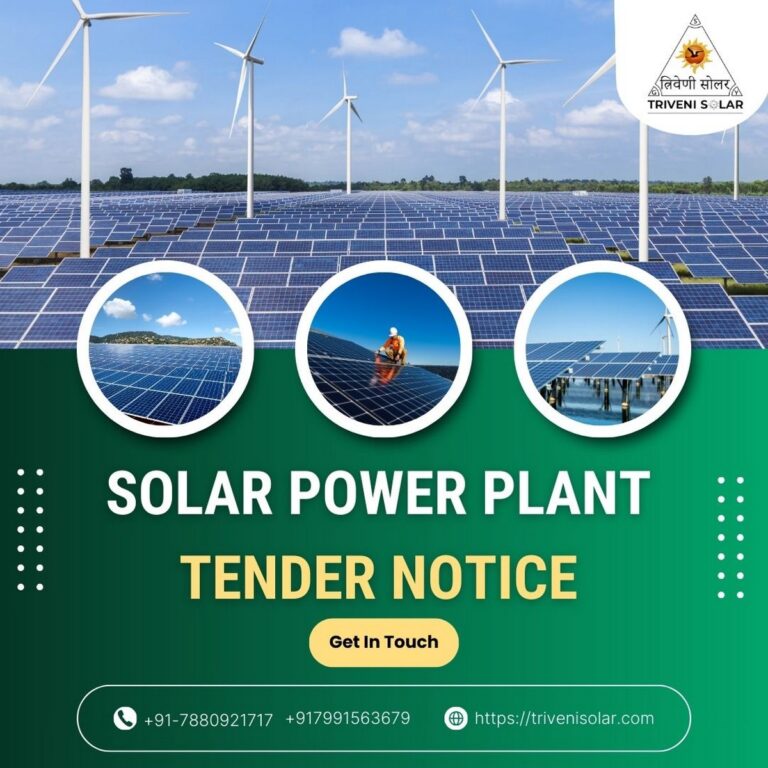A solar power plant is a large-scale system that converts sunlight into electricity using photovoltaic (PV) panels or solar thermal technology. These plants reduce energy costs, cut carbon emissions, and support sustainable growth, making them vital for India’s renewable energy future.
Why Solar Power Plant Are the Future of Energy
With energy demand skyrocketing, countries worldwide are turning to solar power plants as the cornerstone of sustainable electricity generation. Solar is clean, renewable, and increasingly affordable. In fact, the cost of solar has fallen by over 80% in the last decade, making it a strong rival to coal and natural gas. For India, solar is not just a necessity but a mission—aiming to achieve 280 GW of solar capacity by 2030.
What is a Solar Power Plant?
A solar power plant is an infrastructure project designed to generate electricity by harnessing sunlight. There are two main technologies:
- Solar Photovoltaic (PV): Converts sunlight directly into electricity using solar panels.
- Solar Thermal: Uses mirrors/lenses to concentrate sunlight and generate steam to power turbines.
Types of Solar Power Plant
On-Grid Solar Power Plant – Reliable & Efficient
On-grid plants are connected to the electricity grid, allowing excess power to be exported and reducing reliance on backup systems.
Off-Grid Solar Power Plant – Freedom from the Grid
Off-grid systems operate independently with batteries, ideal for rural or remote areas where grid access is limited.
Hybrid Solar Power Plant – The Best of Both Worlds
Hybrid systems combine grid connection with storage, ensuring round-the-clock reliability.
Floating Solar Power Plants—Innovative Future Tech
Floating solar is emerging as a smart solution, reducing land use and improving efficiency by keeping panels cool.
How Do Solar Power Plant Work?
The process is simple yet powerful:
- Sunlight strikes PV panels.
- Panels convert light into DC electricity.
- Inverters transform DC to AC power.
- Power is used on-site or fed into the grid.
- Storage batteries save excess energy for later use.
Advantages of Solar Power Plant
- Cost Savings: Reduced electricity bills for industries and households.
- Sustainability: Zero fuel cost, minimal emissions.
- Job Creation: Millions of jobs in installation, EPC, and maintenance.
- Energy Security: Reduces dependence on imported fuels.
Disadvantages & Challenges You Need to Know
- High initial investment costs.
- Intermittency due to weather & daylight hours.
- Land requirements for utility-scale projects.
- Energy storage is still expensive at scale.
Solar Power Plants in India—Current Status & Growth Targets
India is the third-largest solar market in the world. Major projects include:
- Bhadla Solar Park, Rajasthan: 2,245 MW, the world’s largest solar park.
- Pavagada Solar Park, Karnataka: 2,050 MW.
- Rewa Solar Project, Madhya Pradesh: 750 MW.
India’s roadmap: 280 GW of solar by 2030, powered by both rooftop and utility-scale installations.
Global Leaders in Solar Power Generation
Globally, China leads with massive solar parks, followed by the USA, India, and UAE. Projects like Noor Abu Dhabi (1,177 MW) and Mammoth Solar (1,600 MW) highlight the scale of solar transformation worldwide.
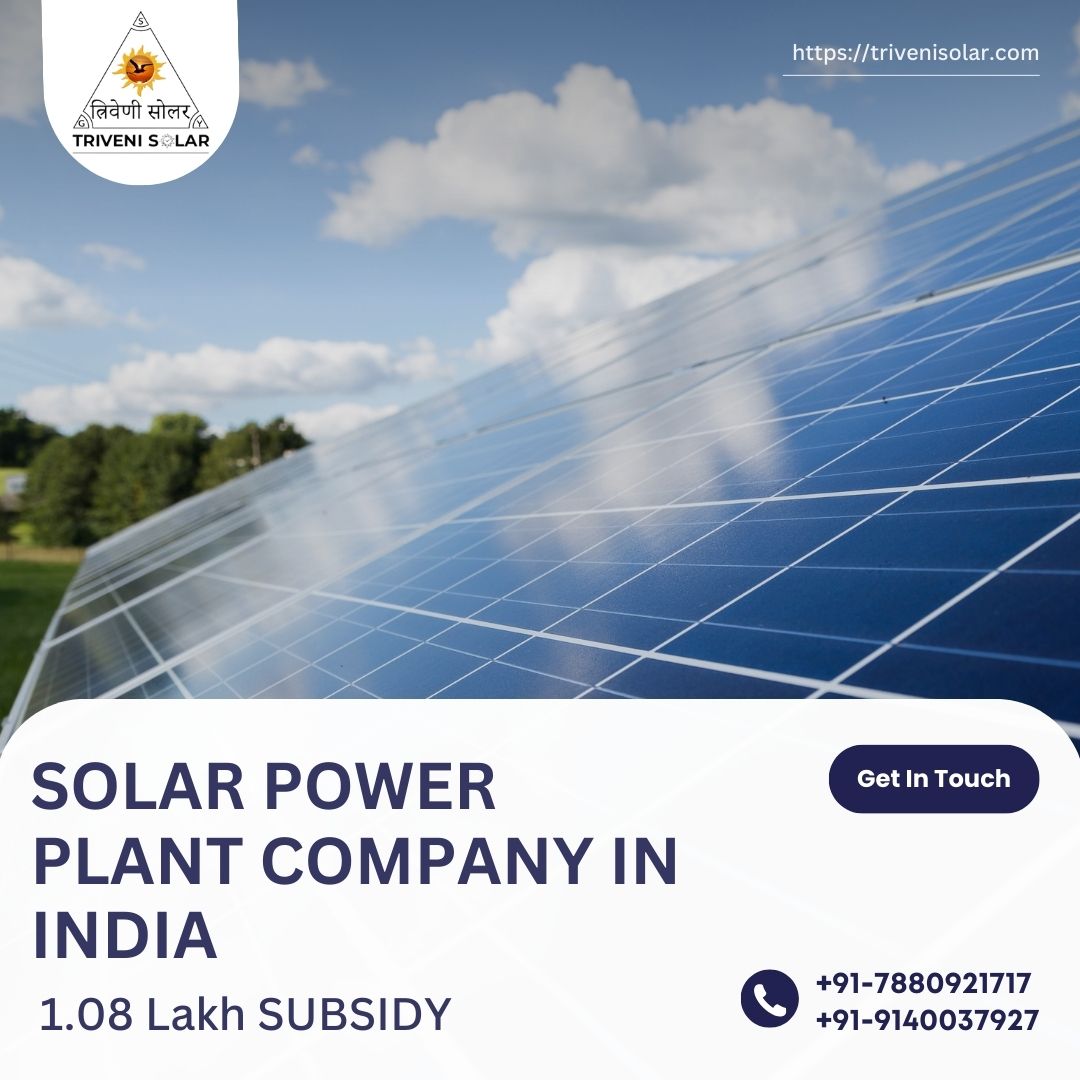
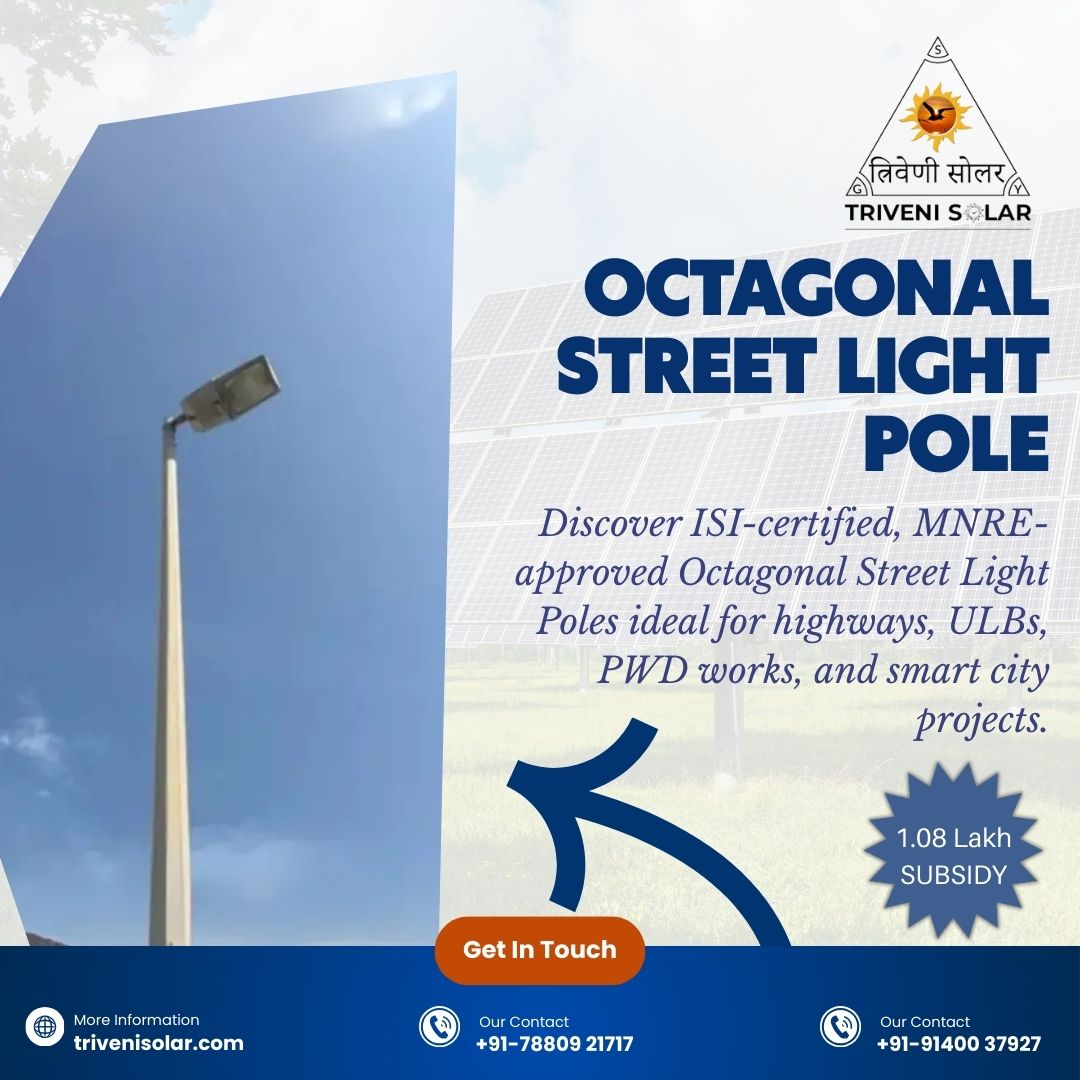
Cost of Setting Up a Solar Power Plant in India
The cost varies by scale:
- 1 MW plant: ₹4.5 – 6 crore (land + equipment + installation).
- Rooftop 10 kW: ₹4 – 6 lakh (with subsidy).
Breakdown:
| Component | Cost Share |
|---|---|
| Solar Panels | 50% |
| Inverters | 15% |
| Mounting Structures | 10% |
| Cables, BOS | 10% |
| Land & Civil | 15% |
ROI & Payback Period Analysis
On average, solar plants offer ROI of 14–20%. Payback is achieved within 4–6 years, depending on subsidies, usage, and scale. For industries with high power bills, the savings are substantial.
Solar Power Plant Technology Innovations
- Bifacial Panels: Generate power from both sides.
- Robotic Cleaning: Saves water, improves efficiency.
- AI Monitoring: Predictive maintenance and smart energy use.
- Battery Storage: Lithium-ion and flow batteries for reliable backup.
Case Studies: Successful Solar Power Plant Projects in India
Bhadla Solar Park: Saved nearly 4 million tons of CO₂ annually. Kerala Floating Solar: Reduced land use and boosted efficiency with natural cooling. Industrial Rooftop Plants: Triveni Solar’s EPC projects cutting energy bills by up to 60%.
Government Subsidies & Policies (India 2025 Update)
- MNRE rooftop solar subsidy: up to 40% for residential users.
- Accelerated depreciation benefits for industries.
- Net metering allowed in most states for rooftop projects.
Solar Power Plant vs. Traditional Power Plant
| Factor | Solar Power Plant | Coal Power Plant | Hydro Power Plant |
|---|---|---|---|
| Setup Cost | Moderate | High | High |
| Fuel Cost | Zero | High | Medium |
| Emissions | Low | Very High | Medium |
| Reliability | Weather-dependent | High | Seasonal |
How to Choose the Right Solar EPC Company
When selecting an EPC partner, check:
- Experience with MW-scale projects
- MNRE/BIS certifications
- After-sales service
Triveni Solar stands out with 500+ projects, certified modules, and full EPC services.
Environmental & Social Impact
Solar plants help reduce millions of tons of CO₂, while also empowering rural areas through electrification and creating thousands of local jobs.
Future Trends in Solar Power Plants
- Ultra-mega solar parks across Asia and Africa.
- Next-gen storage solutions lowering costs.
- Smart grids integrating solar seamlessly.
FAQs – Solar Power Plant
What is the cost of a 1 MW solar power plant in India?
₹4.5–6 crore depending on land, panels, and inverters.
How much land is required for a solar power plant?
About 4–5 acres per MW for ground-mounted projects.
How long does a solar power plant last?
25–30 years with regular maintenance.
Which is the largest solar power plant in India?
Bhadla Solar Park in Rajasthan with 2,245 MW capacity.
Can solar power plants work at night?
No, but stored battery energy or grid connection provides power at night.
Conclusion – Why Triveni Solar is Your Reliable Partner
Solar power plants are not just the future—they are the present solution for sustainable energy. From reducing costs to securing energy independence, the benefits are undeniable. Triveni Solar is your trusted partner in delivering reliable, certified, and affordable solar solutions.

